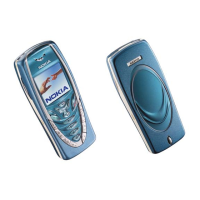System Overview
14
7210 SAS-D CHASSIS INSTALLATION GUIDE
3HE 10087 AAAA TQZZA Edition 01 Issue: 08
2.3 Features
The 7210 SAS-D includes the following features:
• 128 MB internal flash memory
• wire speed, non-blocking, service-aware Ethernet switch
• six 100/1000 fiber-optic SFP ports and four 10/100/1000 Base-T copper ports
• supports the SR OS for feature-rich carrier Ethernet VPN services
• Per-service quality of service (QoS) with up to eight levels of class-based
queuing per port
• Per-service OAM toolkit with IEEE 802.1ag, IEEE 802.3ah and local service
mirroring
• Ethernet features include IEEE 802.1Q and QinQ (stacked VLAN IDs)
• dual-homed connection uplinks to separate aggregation devices
• flexible deployment options with support for mesh and ring topologies
• MEF 9 and MEF 14 compliant platform
• managed by the Nokia 5620 SAM
• supports integrated AC or DC power supply
In addition to the features listed above, the 7210 SAS-D ETR variant supports:
• extended operation temperature range of –40º to 149ºF (–40º to 65ºC)
• Stratum-3 oscillator, allowing support for Synchronous Ethernet and IEEE
1588v2 (Please refer to the Software Release Notes for information about
synchronization support)
• optional external backup power supply for all supported power supply options
Note: The 7210 SAS-D is equipped with a fan that provides air circulation in order to better
regulate the air temperature inside the chassis. The fan does not perform a cooling function.
By default the fan is turned off. Software controls the fan operation when it is set to auto
mode; the user has the option to turn it off. Please refer to the Software Release Notes for
information about software support for controlling fan behavior.

